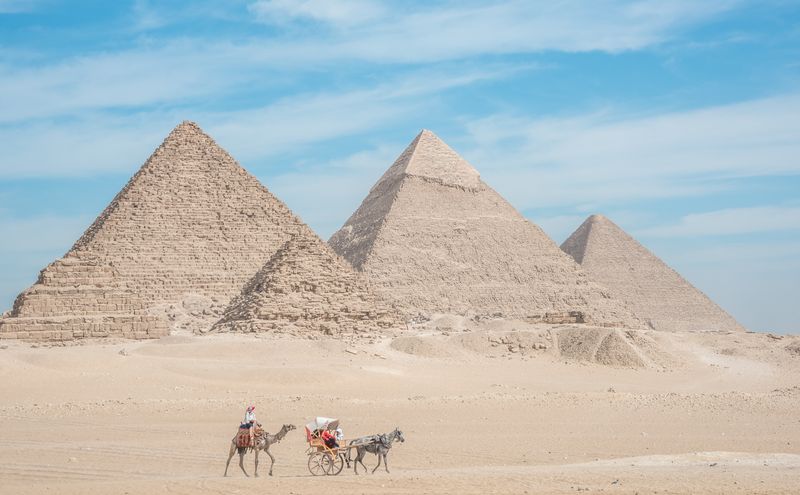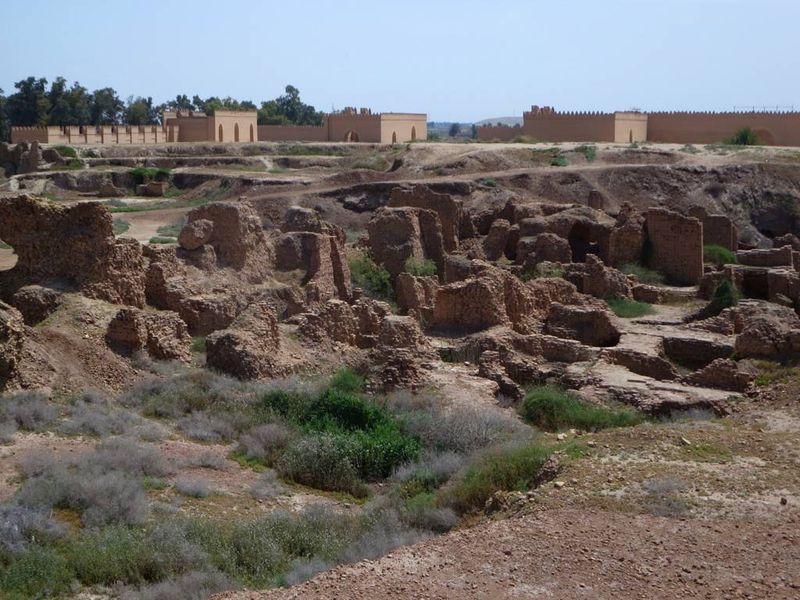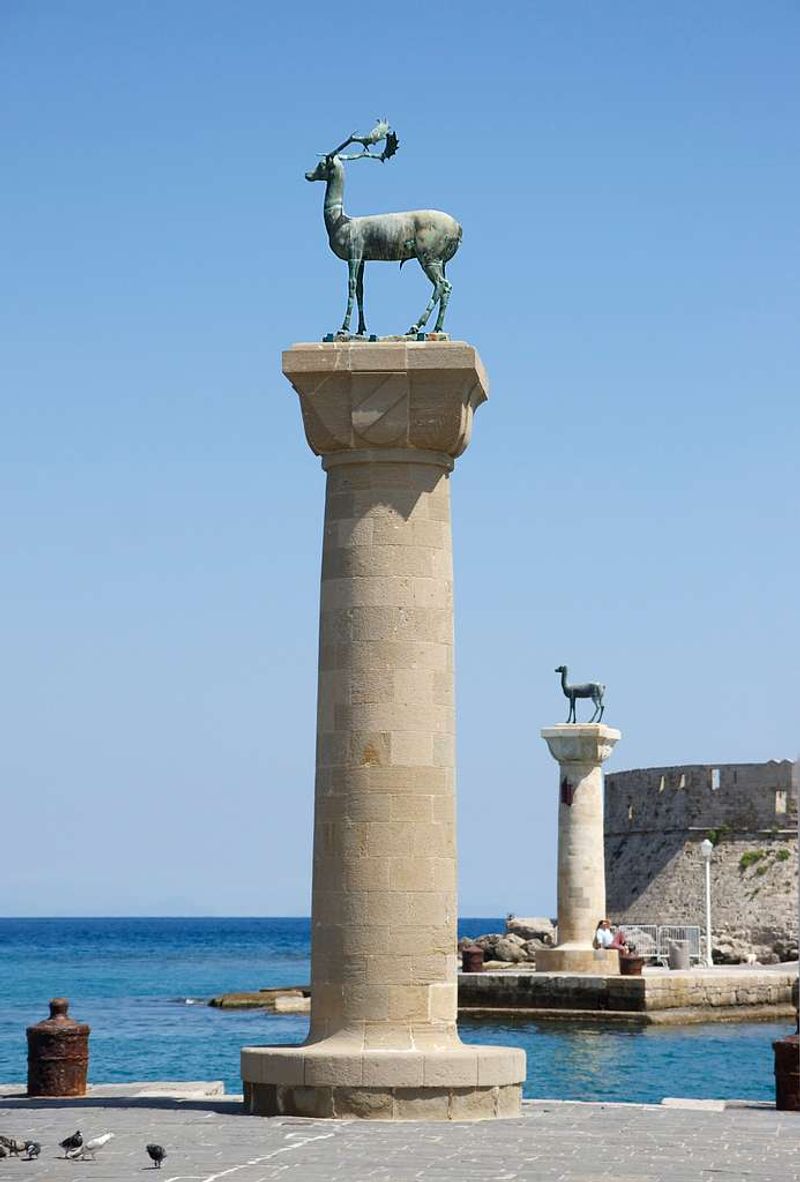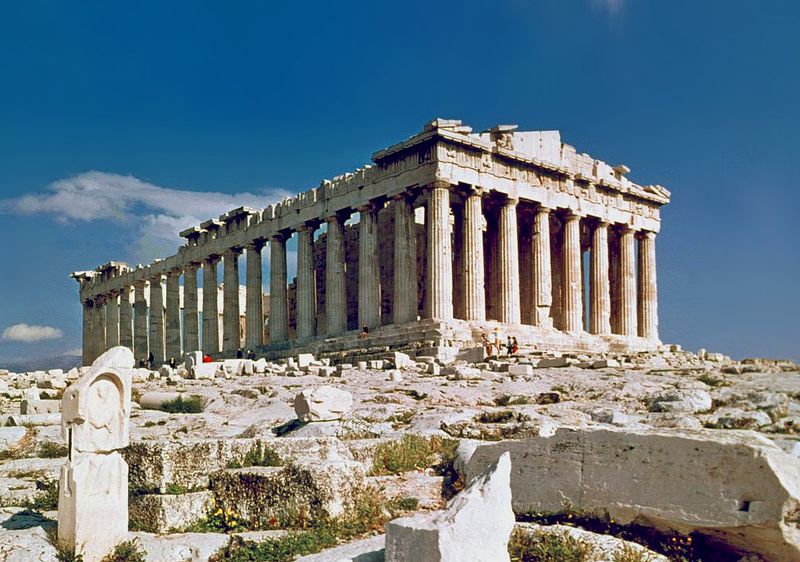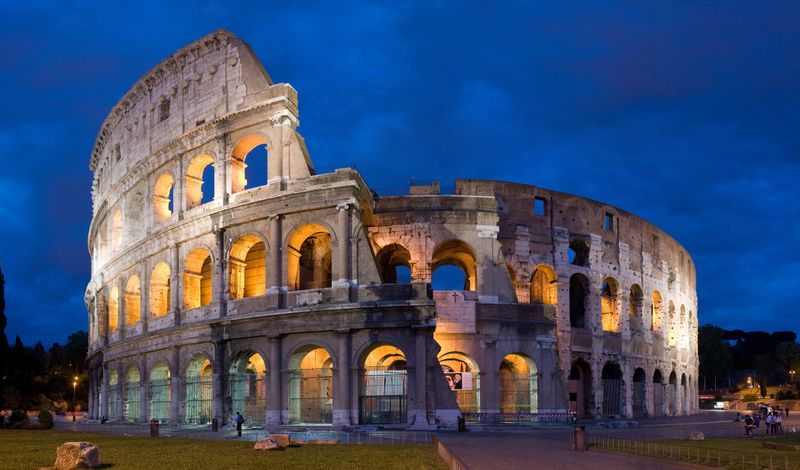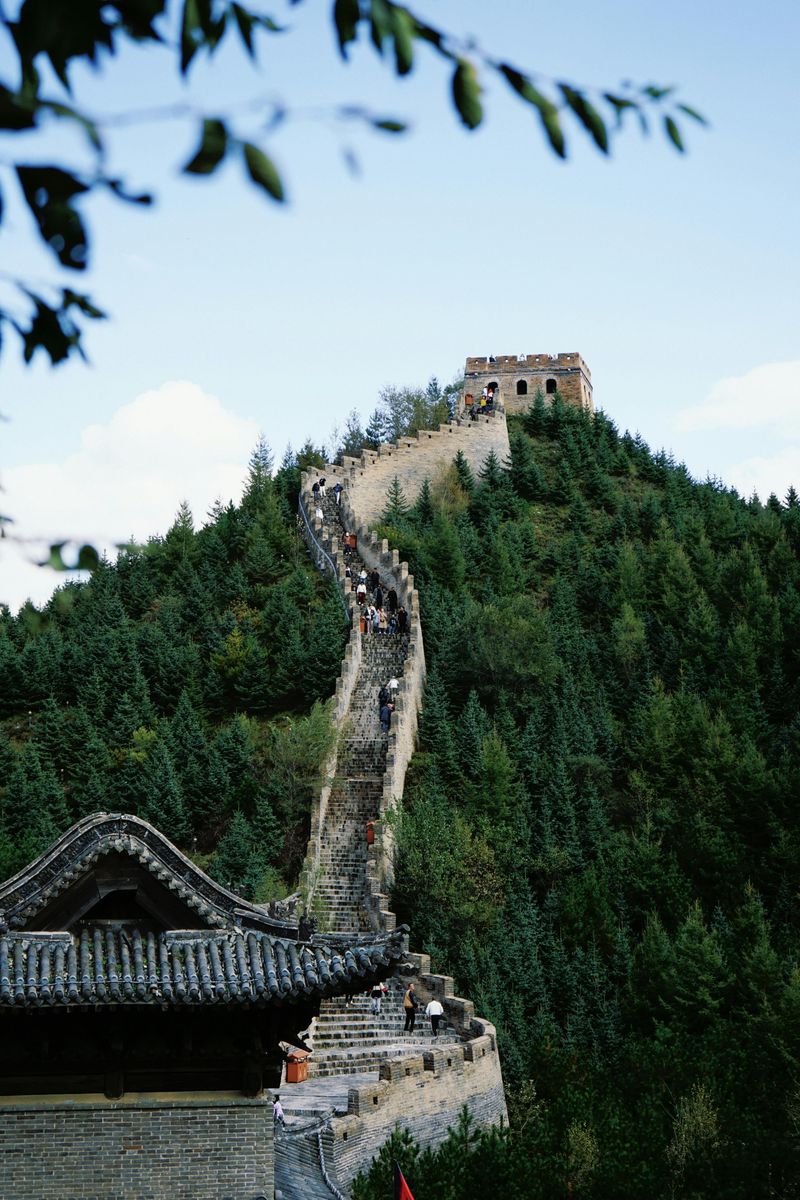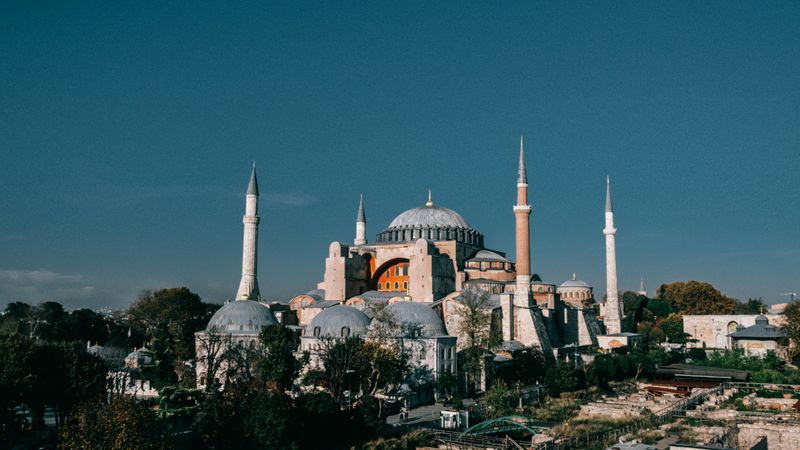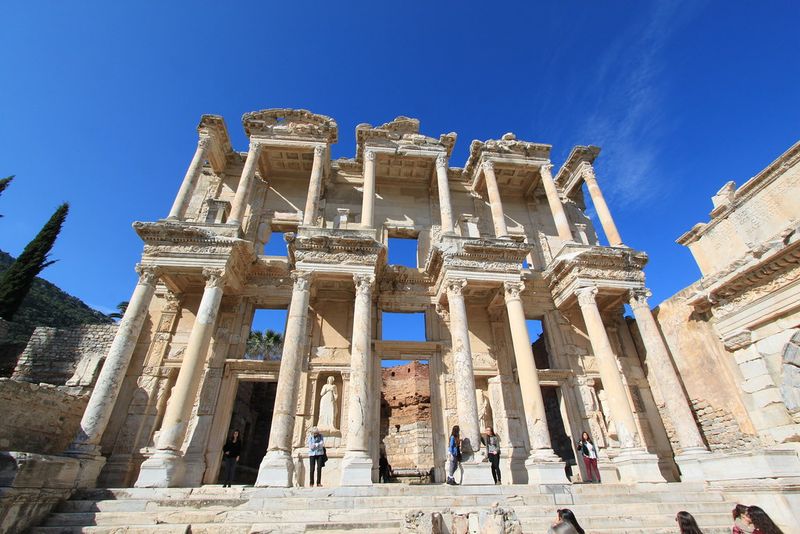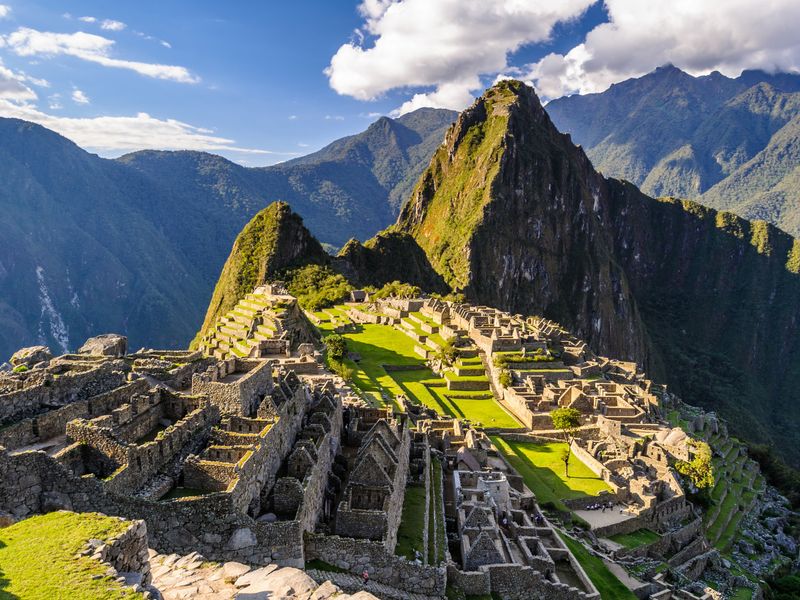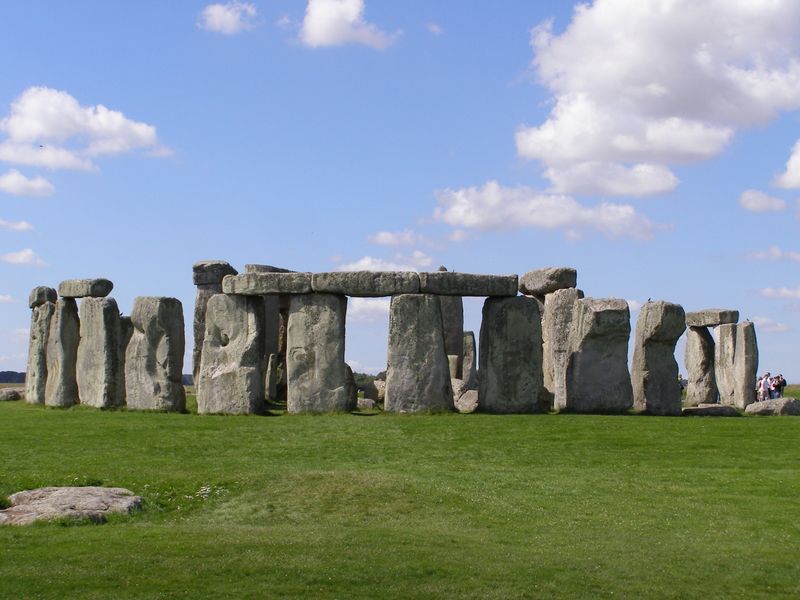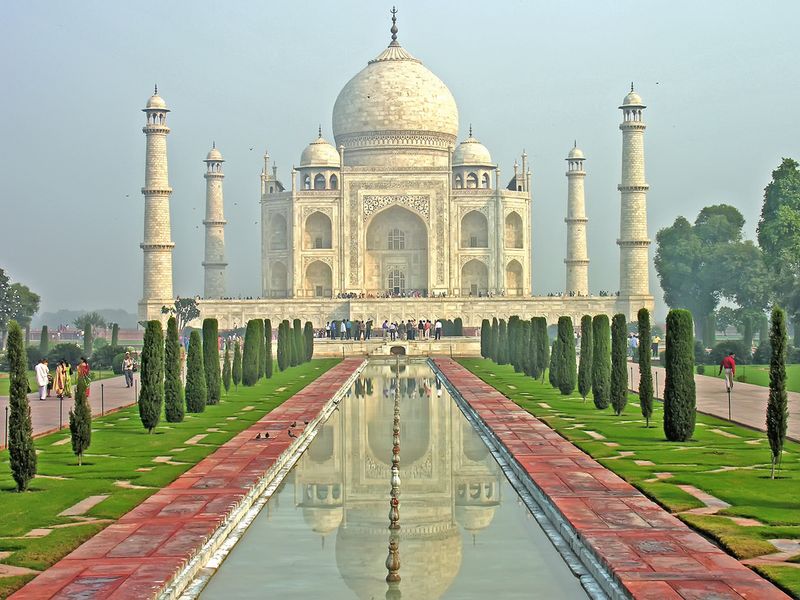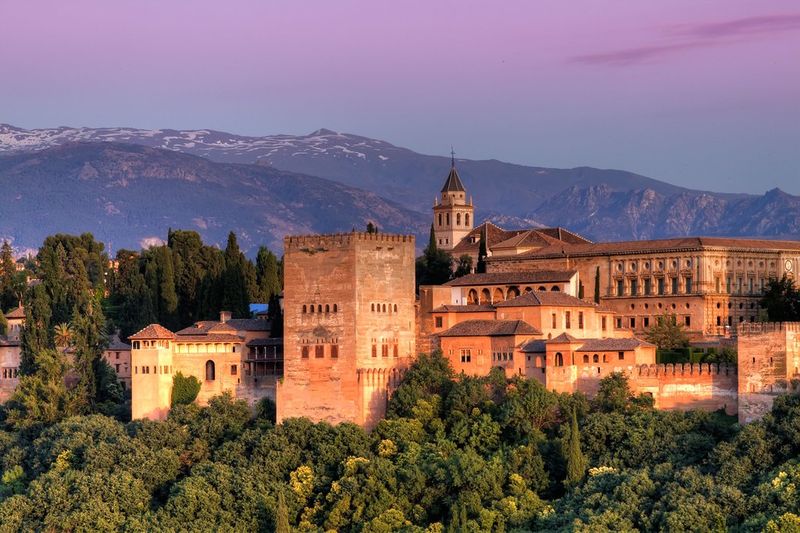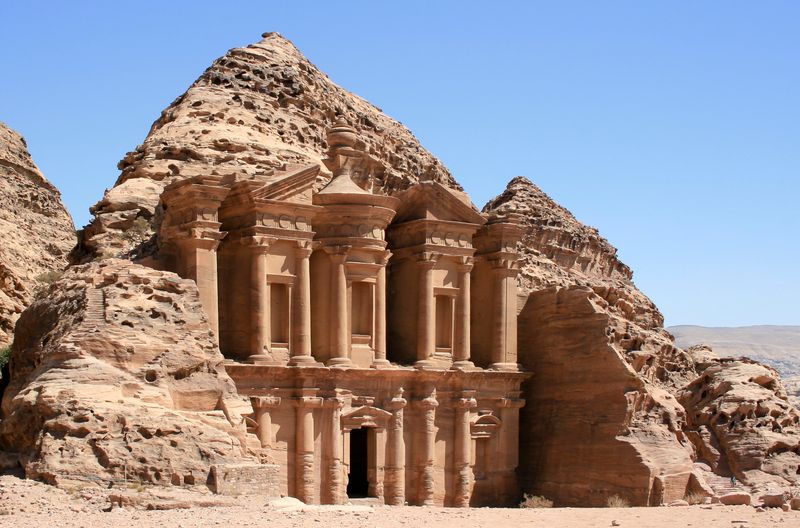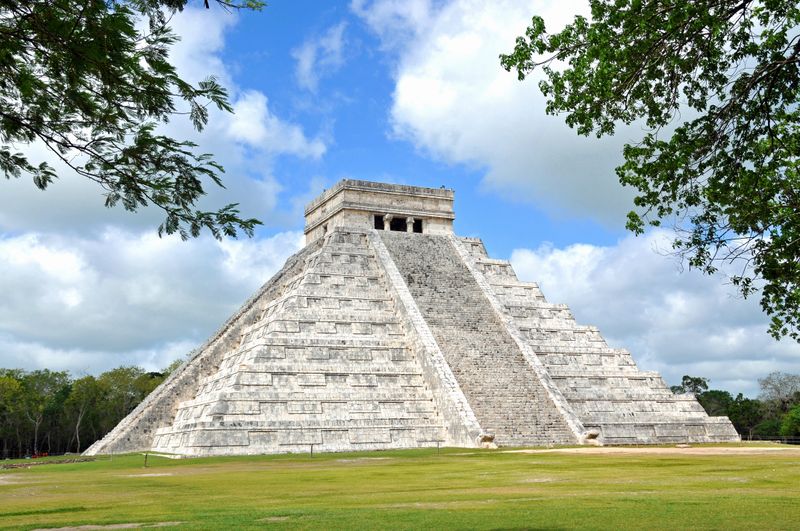Long before the Eiffel Tower dominated Paris in 1889, incredible monuments captured human imagination across the globe. These architectural marvels stood as symbols of power, religious devotion, and engineering brilliance when the iron lady of France was merely a dream. From towering pyramids to mystical stone circles, these landmarks shaped history and defined civilizations for thousands of years.
1. The Great Pyramid of Giza: Egypt’s Eternal Masterpiece
Standing proudly for over 4,500 years, this colossal tomb remains the oldest of the Seven Wonders of the Ancient World still largely intact. Built for Pharaoh Khufu around 2560 BCE, it originally rose 481 feet high with dazzling white limestone casing stones.
Ancient builders positioned two million stone blocks with astonishing precision, creating perfect alignment with true north. Modern engineers still debate how these massive stones were transported and lifted into place without modern technology.
Visitors today can enter the narrow passages leading to the king’s chamber, experiencing the same dark corridors that once guided Khufu to his afterlife. The pyramid’s mathematical perfection continues to inspire awe and theories about ancient knowledge.
2. The Hanging Gardens of Babylon: A Lush Desert Mirage
Although no definitive archaeological evidence confirms their existence, these legendary gardens have captivated imaginations for millennia. Supposedly built by King Nebuchadnezzar II around 600 BCE to please his homesick wife, they created a green paradise in the desert.
Ancient accounts describe terraced gardens rising like a mountain, with exotic trees, vibrant flowers, and cascading waterfalls. Engineers supposedly created an elaborate irrigation system, raising water from the Euphrates River to nourish plants on multiple levels.
Whether real or mythical, the gardens represent humanity’s desire to bend nature to our will. The concept of creating lush greenery in an arid landscape continues to inspire modern vertical gardens and sustainable architecture around the world.
3. The Colossus of Rhodes: A Bronze Giant Guarding the Harbor
Celebrating victory over invaders, the people of Rhodes erected this massive bronze statue of the sun god Helios around 280 BCE. Standing approximately 108 feet tall—similar to the Statue of Liberty—it briefly dominated the harbor entrance before an earthquake toppled it just 54 years later.
Contrary to popular imagery, historians doubt the statue straddled the harbor with ships passing between its legs. Instead, it likely stood to one side, holding a torch that served as a lighthouse. Craftsmen built it using an innovative iron framework covered with bronze plates.
Even after its collapse, the fallen giant remained a tourist attraction for nearly 800 years. Arab merchants eventually purchased the remains, reportedly requiring 900 camels to transport the bronze for recycling.
4. The Lighthouse of Alexandria: Guiding Light of the Ancient World
Rising approximately 330 feet from Egypt’s Mediterranean coast, this engineering marvel guided sailors safely to harbor for nearly 1,500 years. Built around 280 BCE during the Ptolemaic Kingdom, it used an ingenious mirror system to reflect sunlight by day and firelight by night.
The lighthouse featured three distinct sections: a square base, octagonal middle, and cylindrical top with the light chamber. Carved from light-colored stone, it featured statues of Triton at each corner and possibly a statue of Poseidon or Zeus at its summit.
A series of earthquakes gradually damaged the structure between the 10th and 14th centuries. Its remains eventually helped build the Citadel of Qaitbay, which stands on the same site today, incorporating some of the original lighthouse stones.
5. The Parthenon in Athens: Perfection in Marble
Crowning the Acropolis since 438 BCE, this temple dedicated to Athena represents the pinnacle of Classical Greek architecture. Craftsmen incorporated subtle curves into seemingly straight lines, creating optical illusions that make the building appear perfectly proportioned from any angle.
The Parthenon originally featured vibrant painted decorations and housed a massive gold and ivory statue of Athena standing nearly 40 feet tall. Its meticulously carved frieze depicted an Athenian religious procession with extraordinary detail and natural movement.
The building survived relatively intact for over 2,000 years before suffering severe damage in 1687 when Venetian forces bombarded the structure while Ottoman troops used it as a gunpowder magazine. Despite this tragedy, its elegant columns and perfect proportions continue to influence architecture worldwide.
6. The Roman Colosseum: Arena of Ancient Spectacles
Officially named the Flavian Amphitheatre, this massive oval stadium could seat 50,000 spectators for gladiatorial contests, animal hunts, executions, and mock naval battles. Completed around 80 CE, it featured cutting-edge engineering including elevators and trap doors for dramatic entrances.
Roman engineers pioneered the use of concrete, arches, and vaults to create this massive yet graceful structure. The exterior showcased three stories of arches with half-columns in different classical orders: Doric, Ionic, and Corinthian, topped by a fourth level with rectangular windows.
Despite earthquakes, stone-robbing, and centuries of neglect, the Colosseum’s recognizable silhouette survives as Rome’s most iconic landmark. Its efficient crowd-management systems and architectural innovations continue to influence modern sports stadiums around the world.
7. The Great Wall of China: Dragon’s Spine Across Mountains
Stretching approximately 13,171 miles across northern China, this monumental defensive structure represents the world’s largest military construction project. Built and rebuilt over centuries beginning around 220 BCE, the wall we see today dates primarily from the Ming Dynasty (1368-1644 CE).
More than just a wall, this complex system includes watchtowers, barracks, garrison stations, and signaling capabilities using smoke or fire. Builders adapted construction techniques to local geography, using tamped earth in desert regions and stone or brick in mountainous areas.
Contrary to popular belief, the wall isn’t visible from space with the naked eye. However, its strategic importance in controlling trade routes and preventing nomadic invasions shaped Chinese history for centuries. Today it symbolizes Chinese ingenuity and the extraordinary lengths humans will go for security.
8. The Hagia Sophia: Where East Meets West
Originally built as a Byzantine cathedral in 537 CE, this architectural masterpiece features an enormous dome that appears to float above the interior space. Emperor Justinian spared no expense, importing materials from throughout the Mediterranean including columns from the Temple of Artemis.
The building’s most remarkable feature is its massive dome spanning 108 feet in diameter and rising 180 feet above the floor. Forty windows around its base create a ring of light, giving the impression that the dome hovers miraculously in space.
After Constantinople fell to Ottoman forces in 1453, the cathedral became a mosque with minarets added to its exterior. The building’s unique history continued when it became a museum in 1935 and then reverted to mosque status in 2020, showcasing its role as a monument where Byzantine and Islamic influences blend beautifully.
9. The Temple of Artemis at Ephesus: Marble Splendor Lost to Time
Twice built and twice destroyed, this magnificent Greek temple in modern-day Turkey once stood among the Seven Wonders of the Ancient World. The final version, completed around 550 BCE, featured 127 marble columns each standing 60 feet tall and covered in gold and silver decorations.
Dedicated to Artemis, goddess of the hunt and fertility, the temple housed priceless artworks including sculptures by the finest artists of the ancient world. Its size dwarfed other Greek temples, covering an area 425 feet long and 225 feet wide.
Arsonist Herostratus deliberately burned it down in 356 BCE seeking immortal fame. Though rebuilt even larger, the temple was later destroyed by Gothic invaders and Christian zealots. Today, just a single reconstructed column marks where this wonder once stood, surrounded by marshland and scattered marble fragments.
10. Machu Picchu: Inca Citadel in the Clouds
Perched 7,970 feet above sea level in Peru’s Andes Mountains, this 15th-century stone city remained hidden from Western eyes until 1911. Built without mortar, its perfectly fitted stones withstand earthquakes thanks to sophisticated engineering techniques that allow walls to flex slightly during tremors.
The site features distinct urban and agricultural sectors with terraced fields that prevented erosion while maximizing growing space on the steep mountainside. Its astronomical alignments suggest it may have served as a royal retreat and ceremonial center rather than a typical city.
Abandoned around the time of Spanish conquest, Machu Picchu escaped the destruction that befell other Inca sites. Its remote location protected it from looters and colonial builders seeking stone. Today, strict visitor limits help preserve this extraordinary window into pre-Columbian Andean civilization.
11. Angkor Wat: Cambodia’s Heavenly Temple Complex
Rising from the jungle like a stone mountain, this massive temple complex remains the world’s largest religious monument. Built in the early 12th century as a Hindu temple dedicated to Vishnu, it later transitioned to Buddhist use while maintaining its original artwork and symbolism.
The central temple represents Mount Meru, the mythical home of Hindu gods, with its five towers arranged in a quincunx pattern. Surrounding moats and walls span nearly 15 square miles, demonstrating the Khmer Empire’s immense resources and engineering prowess.
Remarkably, Angkor Wat’s bas-reliefs extend for nearly half a mile, depicting Hindu epics, historical events, and daily life with extraordinary detail. Unlike many ancient sites, it never fell completely into ruin, remaining a place of worship for centuries even as jungle reclaimed surrounding temples.
12. Stonehenge: Prehistoric Mystery on Salisbury Plain
Arranged in concentric circles, these massive stones have puzzled visitors for millennia. Construction occurred in several phases between approximately 3000-1500 BCE, with the most recognizable trilithons (two vertical stones supporting a horizontal lintel) dating to around 2500 BCE.
The largest sarsen stones weigh approximately 25 tons each and were transported from 20 miles away. Even more mysteriously, the smaller bluestones originated in Wales, 140 miles distant, suggesting extraordinary determination and engineering skills among its Neolithic builders.
Aligned with the solstices, Stonehenge likely served astronomical, religious, and ceremonial purposes. Recent discoveries of nearby burials, settlements, and additional monuments reveal it was part of a complex sacred landscape. Despite centuries of study, this ancient stone circle continues to guard many of its secrets.
13. The Moai Statues of Easter Island: Stone Sentinels of the Pacific
Carved between 1250 and 1500 CE, nearly 900 monolithic human figures with oversized heads watch over Rapa Nui (Easter Island). Averaging 13 feet tall and weighing 14 tons, these remarkable statues represented deceased ancestors and embodied their supernatural power or mana.
Rapa Nui craftsmen carved the figures from volcanic tuff using stone tools, then transported them up to 11 miles across the island. Many originally wore red stone “hats” (pukao) and had coral eyes with obsidian pupils, bringing them eerily to life.
The environmental cost of moving these massive statues may have contributed to the island’s ecological collapse. Deforestation for rollers and sledges led to soil erosion, diminished crop yields, and population decline. These silent sentinels thus stand as both artistic triumphs and cautionary reminders of resource management.
14. The Taj Mahal: Monument to Eternal Love
Commissioned by Mughal Emperor Shah Jahan as a mausoleum for his beloved wife Mumtaz Mahal, this white marble masterpiece took 22 years to complete (1632-1653). The perfect symmetry of its design represents harmony and the Islamic vision of paradise.
Master craftsmen inlaid precious and semi-precious stones in intricate floral patterns throughout the building. The main dome rises 240 feet and is surrounded by four smaller domes, with slender minarets at each corner of the platform.
The structure changes appearance throughout the day as light conditions shift, appearing pinkish in the morning, brilliant white at noon, and golden in moonlight. Gardens, reflecting pools, and red sandstone buildings complement the main mausoleum, creating a unified complex that represents the pinnacle of Mughal architecture.
15. The Alhambra: Moorish Jewel of Granada
Perched atop a plateau overlooking Granada, Spain, this sprawling palace-fortress represents the pinnacle of Islamic architecture in Europe. Built primarily between the 13th and 14th centuries by the Nasrid dynasty, it combines defensive military features with exquisitely delicate interior spaces.
The Alhambra’s most distinctive feature is its ornate decoration—walls covered in intricate geometric patterns, stylized Arabic calligraphy, and nature-inspired motifs. Craftsmen created these decorations using carved plaster, glazed tiles, and woodwork of extraordinary complexity.
Water features prominently throughout the complex, with fountains, channels, and reflecting pools creating cooling effects and pleasant sounds. This masterful use of water, light, and ornamentation transformed the practical concerns of a fortress into a sensory paradise often described as “heaven on earth.”
16. Petra: Rose-Red City Half as Old as Time
Carved directly into pink sandstone cliffs in southern Jordan, this ancient city flourished as a trading hub for the Nabataean civilization from around the 5th century BCE. Visitors access the city through the Siq, a narrow gorge that suddenly opens to reveal the Treasury (Al-Khazneh), a 130-foot-tall façade with Hellenistic columns and sculptures.
Beyond the Treasury lie hundreds of additional structures including tombs, a theater, temples, and dwellings. Nabataean engineers created sophisticated water management systems with dams, cisterns, and channels to capture seasonal rainfall and support a desert population of approximately 20,000.
Rediscovered by Western explorers in 1812, Petra had never been truly forgotten by local Bedouin tribes. Its unique blend of Nabataean, Egyptian, and Greco-Roman architectural elements creates a mysterious city that seems to glow from within when sunlight strikes its rose-colored stone.
17. Chichen Itza: Maya Astronomical Marvel
Dominating Mexico’s Yucatán Peninsula, this ancient Maya city reached its height between 800-1200 CE. Its centerpiece, El Castillo (Temple of Kukulcán), functions as a massive stone calendar with 91 steps on each of its four sides plus the platform top, totaling 365 steps—one for each day of the year.
During the spring and autumn equinoxes, triangular shadows create the illusion of a serpent slithering down the northern staircase, demonstrating the Maya’s sophisticated understanding of astronomy and mathematics. The site also features the largest ball court in Mesoamerica, where players competed in a ritual game with life-or-death consequences.
Chichen Itza’s Sacred Cenote, a natural sinkhole filled with water, served as a place of pilgrimage and sacrifice. Archaeologists have recovered jewelry, pottery, and human remains from its depths, confirming historical accounts of offerings to the rain god Chaac.

